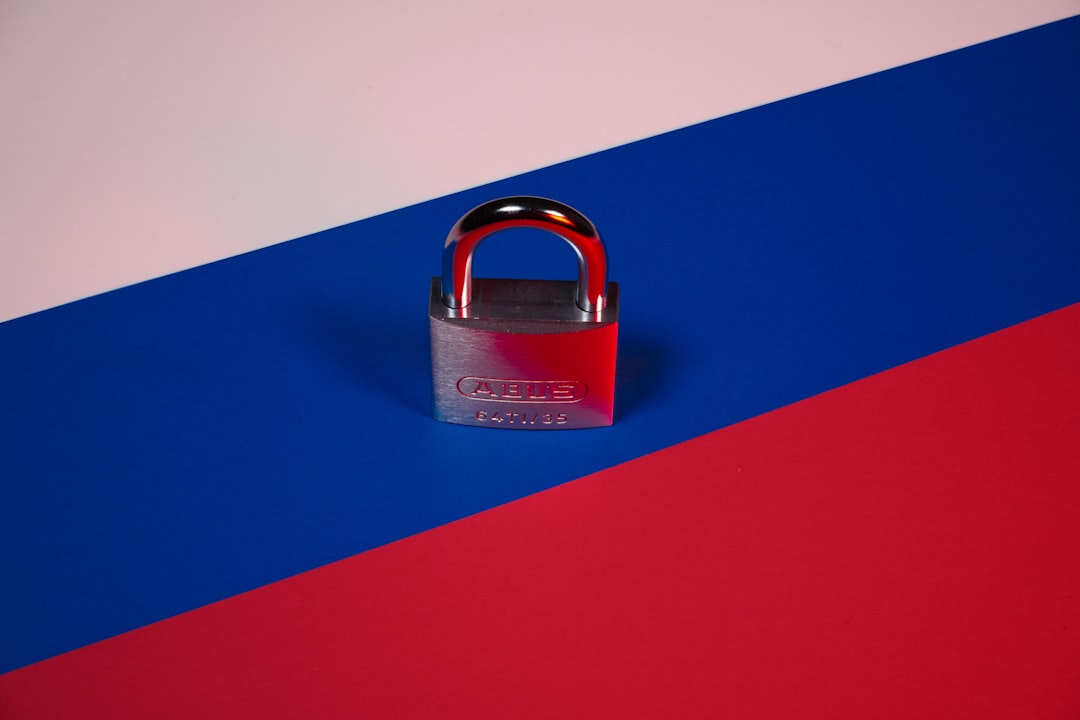

Engage prospects with a scan and streamline customer engagement with FREE QR code marketing tools by Sona – no strings attached!
Create a Free QR CodeFree consultation

No commitment

Engage prospects with a scan and streamline customer engagement with FREE QR code marketing tools by Sona – no strings attached!
Create a Free QR CodeFree consultation

No commitment
Tampering, theft, and counterfeiting are persistent threats, placing security seal suppliers at the intersection of innovation and necessity. Trust in the protection of shipments, safeguarding of pharmaceuticals, and assurance of goods' authenticity is paramount, and the right security seal can define that trust. Persistent industry challenges include missing high-value prospects due to incomplete tracking, outdated account data, and fragmented verification processes that allow for fraud and inefficiency.
To address these hurdles, security leaders are turning to QR code-enabled security seals: innovative tools that merge physical deterrence with digital intelligence. Integrating QR codes transforms each product or shipment into a traceable, customizable, and verifiable asset at scale. This digital evolution provides crucial insights that combat fraud, streamline compliance, and empower suppliers and customers with seamless workflows, setting a new standard for supply chain transparency.
By embedding QR codes directly onto customizable security seals, organizations convert analog verification into actionable digital experiences. This shift reinforces supply chain security and ushers in an era of data-driven decision-making, enabling end-to-end traceability and greater operational efficiency. Scans can trigger authentication pages, incident reporting forms, and dynamic instructions that change based on region or role, while analytics connect offline events to CRM, compliance logs, and revenue outcomes.

In the security seal industry, missing or misidentified prospects often stem from gaps in data capture and outdated, manual tracking systems. The fallout includes lost sales, slow incident response, and poor customer experience. QR codes bridge this divide by enabling security seal suppliers to create intelligent, connected seals that link physical products with digital records. A single scan can authenticate a product, log a handoff, notify a compliance manager, and enroll a buyer into a relevant communications flow.
Shifting from paper logs and ad hoc emails to standardized, QR-driven workflows gives every party in the chain of custody a faster and more accurate path to the next action. It also simplifies training and reduces the cognitive load on field teams since the code instructs users what to do next. Each scan becomes an auditable event that captures context like time, GPS, device, and user role, which helps detect anomalies and accelerate investigation.
With every scan surfacing real-time engagement signals, suppliers benefit from better visibility into user actions. That visibility enables more responsive workflows, lower fraud losses, and higher-value follow-up across sales, service, and compliance operations.

Security seal deployment is often limited by the inability to track anonymous access attempts or respond effectively to tampering. Pain points like lack of visibility into offline traffic and churn from missed engagement are pervasive. A seal can be the first and only contact point in a shipment’s life, so making that moment digital is vital.
QR codes convert passive seals into active endpoints for immediate authentication, documentation, and incident reporting. They reduce friction for every participant in the chain, including drivers, warehouse staff, auditors, and customers, because no special hardware or app is required, as shown in Sona QR’s QR codes in marketing. The result is higher adoption and more complete datasets for analysis.
Security seal suppliers leveraging QR technologies unify tracking, targeting, and incident response. They consistently close the loop from potential risk to proactive resolution, while providing customers with transparency that strengthens trust.
Selecting the right QR format is essential to solving the pain points of tracking, personalization, and secure access in security seal applications. The format determines what happens at scan, what data you can collect, and how flexible you can be after deployment.
For security environments that mix high-stakes verification with operational scale, dynamic codes provide bandwidth to adapt over time. Static codes still have a place for fixed documents or long-lived instructions, but they limit analytics and flexibility. It is common to mix both depending on the asset and risk profile.
By adopting dynamic formats for high-variability scenarios, security seal providers maintain control and adaptability even when shipment types, regulatory guidelines, or customer segmentation shifts unexpectedly. Dynamic codes also allow for targeted messaging by buyer stage or geography without changing the physical seal.
Many missed leads or upsell moments in the security seal sector are due to incomplete data on who interacts with shipments at each stage. QR codes directly address this by making every interaction a data point for segmentation and follow-up. When scans flow into a CRM and sync with systems like HubSpot CRM, sales and service teams can quickly identify high-intent accounts.
Growth comes from both defensive and offensive plays. Defensively, better verification reduces losses, chargebacks, and disputes. Offensively, scan-driven profiles and behaviors identify re-order candidates, expansion opportunities, and at-risk customers who require proactive support.
Strategic QR deployments create recurring data-driven touchpoints. Over time, this intelligence powers predictive replenishment, targeted upsells such as higher-grade seals or monitoring services, and reduced overlooked opportunities in enterprise accounts.

In markets plagued by undetected tampering and unknown users, QR-enabled security seals become a core component of both security and customer experience. Use cases span high-risk logistics, pharmaceutical compliance, and critical infrastructure access control, each with measurable outcomes.
The best deployments do more than verify authenticity. They build durable feedback loops and enable collaborative security with customers, carriers, and regulators. Each scan adds to a living record that increases confidence and speeds issue resolution.
By surfacing these otherwise hidden data points, security seal suppliers can act decisively on real engagement. They reduce counterfeit risk, accelerate audits, and keep high-value prospects and accounts within reach through targeted, data-backed follow-up.
The absence of account-level granularity often means suppliers waste budget on cold audiences. QR codes solve this by delivering event-level intent data from real-world interactions. Scans reveal who cares about what, where, and when, allowing highly specific intent-driven retargeting.
When integrated with marketing automation tools, scan activity can trigger personalized nurture sequences or sales alerts. For example, a surge in scans from a particular route or facility may indicate a change in risk profile or a contract expansion opportunity.
This data-driven approach draws actionable insights from each physical-to-digital interaction. It maximizes ROI, supports account-based marketing, and strengthens customer retention through timely and relevant engagement.
Disconnected campaigns confuse prospects and dilute messages. QR codes unify the experience across print, packaging, events, and digital channels by linking each touchpoint to a coherent next step. That cohesion is essential in B2B procurement cycles and regulated industries.
A multi-channel strategy should align the QR destination with the buyer or operator context. The same physical code can deliver different content by role or language with dynamic routing, reducing friction and elevating the perceived quality of your brand.
QR codes act as the offline onramp to your digital marketing and operations engine. With a centralized platform like Sona QR, you can manage all codes, monitor performance, and sync scan data with CRM and ad platforms to create a truly connected experience.
Unclear or underdeveloped campaign strategies often lead to incomplete tracking and missed value capture. A structured rollout process ensures your QR initiatives connect to real business outcomes and can scale without adding complexity.
Use the following steps to deliver a high-impact program that aligns with your operational calendar and compliance obligations. Treat this as a repeatable framework that can be adapted for specific product lines or regions.
Start by aligning the QR initiative to a single, high-value objective such as chain-of-custody visibility, counterfeit prevention, or accelerated returns processing. Document who scans, where they scan, and what the ideal post-scan action should be. Define measurable results such as fewer verification delays, faster incident resolution times, or increased reorder rates.
Decide between static and dynamic codes. For most security use cases, dynamic codes are recommended since they support analytics, content updates, and role-based routing. Map QR destinations to the user’s job to be done such as authentication, instruction retrieval, or reporting.
Design your QR with brand framing and a clear CTA such as Scan to verify or Scan to report an issue. Place codes on flat, accessible areas that will not degrade with handling or temperature. Field-test in realistic conditions with different devices, lighting, and angles to ensure reliable scanning.
Time your rollout for peak impact, such as before high-volume shipping seasons or new regulatory deadlines. Prepare internal playbooks and external instructions so every stakeholder knows what to expect post-scan. Confirm that support teams, auditors, and sales know how to interpret scan events.
Set up dashboards in a platform like Sona QR to monitor scans by asset, route, location, and device. Tie scans to downstream outcomes like closed deals, dispute prevention, or on-time deliveries through Sona’s account identification and attribution features. Iterate on content, placement, and CTAs based on real-world performance.

Many suppliers struggle to attribute revenue or retention gains to their security investments. Without end-to-end tracking, scans become isolated metrics rather than signals of progress. A robust analytics stack connects each scan to actions, outcomes, and financial impact.
QR-enabled analytics provide the connective tissue between physical events and digital systems. With Sona QR, you capture detailed telemetry at scan. With Sona.com, you attribute that activity to accounts and opportunities through multi-touch models and identity resolution. This combination turns previously invisible engagement into a reliable driver of decision-making.
The result is a tight feedback loop where physical interactions inform sales, service, and compliance decisions. Over time, analytics guide where to invest in stronger seals, smarter routing, and targeted campaigns that align with account needs.
Scaling QR code deployments introduces new challenges such as maintaining scannability across materials, sustaining staff adoption, and keeping content fresh. A handful of best practices can accelerate success while avoiding common pitfalls.
Focus on standardization where it helps, and customization where it counts. Standardize code design, metadata, and analytics, while tailoring content and instructions to role, region, or product class. This approach keeps management simple and outcomes high.
A real-world illustration: when a logistics provider used QR-coded seals on every outbound container, structured incident reporting and exception flagging enabled faster claim resolution and measurable fraud reduction. The same data also revealed top-performing routes and partners, informing expansion strategy.

Innovative deployments show how QR-enabled seals can reduce theft, accelerate compliance, and unlock engagement data for go-to-market teams. The key is to embed codes where they add utility in the moment, then use analytics to turn those moments into insight.
Use these examples as inspiration, then tailor destinations and workflows to your own risk profile, product lines, and customer needs. Creative placement and dynamic routing can turn maintenance tasks into opportunities for conversion and retention.
These examples show that QR codes are not merely a marketing tactic. They are operational tools that connect security, service, and sales in a way that is visible, measurable, and repeatable.
Success with QR codes comes down to clarity, context, and continuity. Clarity ensures users know what to do, context ensures they get what they need in the moment, and continuity ensures the data flows to the teams who can act on it. Companies that excel invest as much in content, integration, and training as they do in materials and print.
Conversely, common pitfalls include placing codes on surfaces that degrade, linking to generic pages that do not match user intent, and failing to instrument analytics properly. Avoid these mistakes and you will turn each scan into a reliable signal of intent and risk.
QR codes are redefining what is possible for security seal suppliers, creating a seamless, data-driven bridge between every physical item and its digital credentials. By modernizing workflows with these technologies, businesses tackle challenges such as missed prospects, incomplete data, and fragmentation along the customer journey, while gaining high engagement, rapid incident detection, and actionable analytics. Each scan strengthens security and compliance, accelerates service, and fuels smarter planning, making every QR-enabled security seal both a safeguard and a growth opportunity. If you need a fast start, you can generate and track your first codes with Sona QR in minutes, then connect scan activity to pipeline and revenue attribution with Sona.com. Start creating QR codes for free.
QR codes have revolutionized the security seal suppliers industry by transforming traditional seals into intelligent, trackable access tools that enhance security and operational efficiency. Whether it’s enabling real-time verification, preventing unauthorized access, or streamlining inventory management, QR codes replace cumbersome manual checks with instant, mobile-friendly scans that provide actionable data at every step.
Imagine instantly knowing when and where a security seal was accessed, preventing tampering before it happens, and delivering seamless, trustworthy experiences to your clients. With Sona QR, you can create dynamic, trackable QR codes in seconds, update access protocols on the fly without reprinting seals, and link every scan to comprehensive security logs. No more blind spots—just smarter, more secure operations.
Start for free with Sona QR today and transform your security seals into powerful access control and monitoring tools that keep your assets safe and your clients confident.
QR code security seals provide traceability, authentication, and digital verification to reduce tampering, theft, and counterfeiting while improving operational efficiency and customer engagement.
They convert physical seals into digital endpoints that enable real-time authentication, incident reporting, and chain-of-custody tracking by capturing scan data such as time, location, and user role.
Types include tamper-proof plastic seals, bolt seals, stickers, labels, and direct mail seals, all of which can incorporate static or dynamic QR codes depending on the use case.
Security seals can be custom-designed to include your company logo alongside QR codes, with options to tailor content, calls to action, and instructions based on region, role, or product class.
Best practices include selecting dynamic QR codes for adaptability, optimizing code placement for scannability, integrating scan data with CRM and compliance systems, educating users on scanning benefits, and continuously monitoring analytics to improve workflows.
Use Sona QR's trackable codes to improve customer acquisition and engagement today.
Create Your FREE Trackable QR Code in SecondsJoin results-focused teams combining Sona Platform automation with advanced Google Ads strategies to scale lead generation

Connect your existing CRM

Free Account Enrichment

No setup fees
No commitment required

Free consultation

Get a custom Google Ads roadmap for your business






Launch campaigns that generate qualified leads in 30 days or less.
